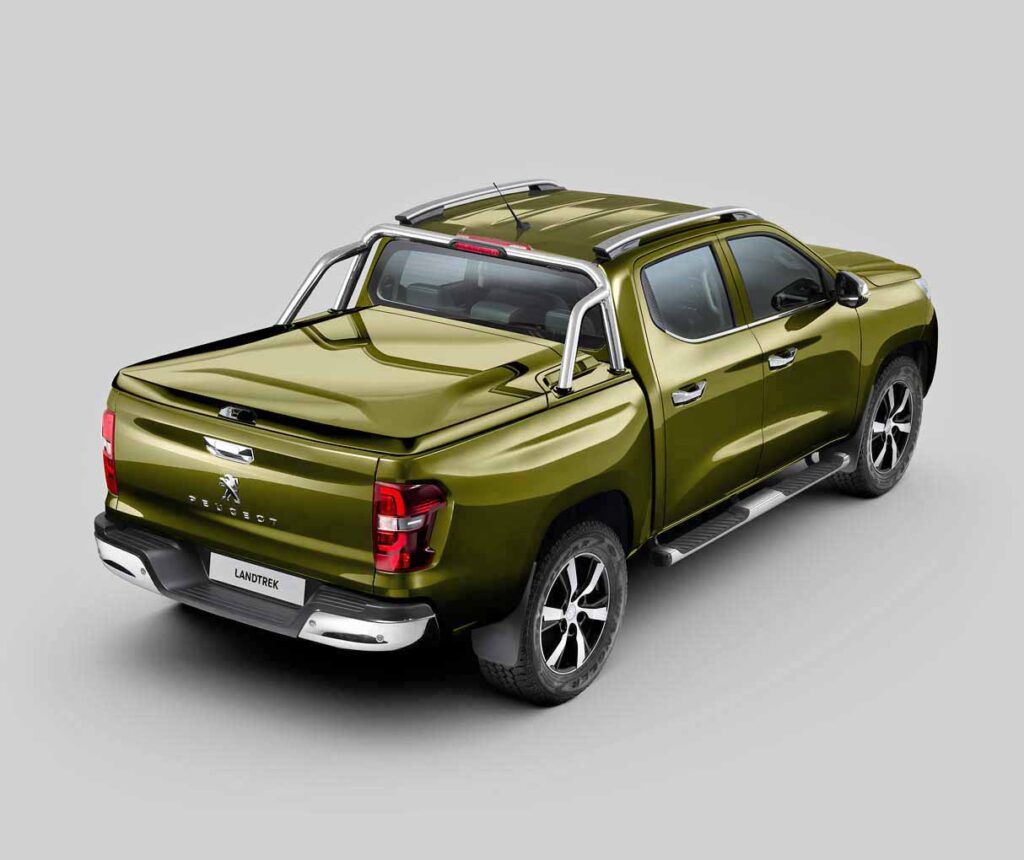In the bustling, vibrant automotive landscape, a newcomer is poised to make its entry: The Peugeot Landtrek pickup.
With MIAS 2023 bringing about whispers of its debut this year, enthusiasts and industry insiders alike are buzzing about what this means for long-standing champions like the Toyota Hilux, Ford Ranger, Mitsubishi Strada, Nissan Navara and Isuzu D-Max.
Will the Landtrek prove itself a worthy competitor, or will it be drowned out by the roar of the more seasoned veterans?
The 2023 Landtrek is a picture of robust elegance, a consistency of strength and sophistication that the French automaker is known for. It’s equipped with either a 1.9-liter turbodiesel engine that delivers 150 horsepower and a torque of 350 Nm or a 2.4-liter gas lump with 210 horsepower and 320 Nm of torque, available in rear-wheel or all-wheel-drive options.
Prospective buyers can select between two transmission options: a 6-speed manual or a 7-speed automatic, tailored to suit a spectrum of driving styles and terrains.

The new Olea Green color is stunning and is sure to stand out on Philippine roads.
The Landtrek flaunts dimensions that are bound to impress, with a length of 5390 mm, a width of 1630 mm, and a hefty ground clearance of 235 mm, making it well-suited for the varying road conditions in the Philippines. It’s a 5-seater pickup with a curb weight of 2095 Kg, further emphasizing its stability and robustness.
Although based on the Chinese Kaicene F70, Peugeot’s version of the truck is imbued with the brand’s luxurious character and may resonate with consumers who require more opulence in their rough runabouts.
But the question that lingers is: How will the Landtrek fare against Philippine favorites? There’s no denying that the Toyota Hilux, for instance, has a firm grip on the market with its robust reliability and competitive pricing. The 2023 Hilux ranges from P1,174,000 to P2,077,000, depending on the variant.
Will the Landtrek be able to match this range while offering comparable, if not superior, features?
According to statista.com, the pickup truck market in the Philippines is projected to reach P24 billion in 2023, with an expected annual growth rate of 4.16 percent until 2027. The average price of pickup trucks in the market segment in 2023 is anticipated to be around P1.8 million.
Peugeot’s entry into this market represents an intriguing development, one that’s ripe with opportunities and challenges.
The Landtrek has the potential to disrupt the status quo, but it will need to navigate the idiosyncrasies of the Philippine automotive market. It’s a landscape shaped by several factors, including customer loyalty to established brands, the rugged geography of the archipelago, and the economic realities of its populace.
The success of Landtrek in the Philippines will hinge on Peugeot’s ability to showcase the distinctive qualities of its vehicle while maintaining a competitive price point.
Highlighting Landtrek’s strengths — such as its robust design, impressive power, and the luxury associated with the Peugeot brand — will be crucial.
Equally important will be the ability to ensure reliable after-sales service and parts availability, in areas where established brands have already built strong networks.
While it’s too soon to predict how the Landtrek will be received in the Philippines, its entry is a testament to the dynamism of the automotive industry in the country.
While waiting for Landtrek’s debut, it’s worth remembering that competition often breeds innovation.
With a new player in the ring, established brands will likely step up their game, leading to even better offerings for consumers.
In this sense, the arrival of Landtrek is a win for all.
It’s a reminder of the ever-evolving nature of the automotive world and the endless possibilities it presents.

















